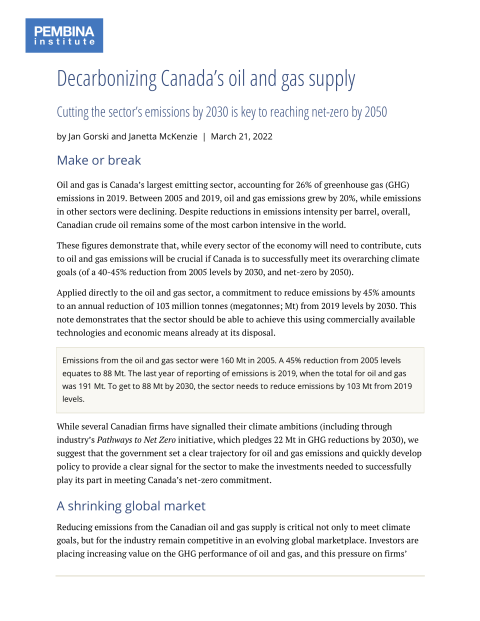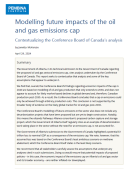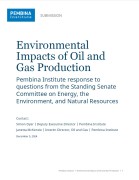As Canada’s single largest source of emissions, the oil and gas sector has the potential to make or break the country’s climate commitments. Despite successful efforts to reduce emissions intensity per barrel in the last decade, Canadian crude oil remains some of the most carbon intensive in the world, and the industry’s emissions have continued to increase at a time when greenhouse gases from other sectors have declined.
If Canada is to achieve its economy-wide goals of 40-45% reduction by 2030, and net-zero by 2050, the Pembina Institute holds the view that the oil and gas industry’s emission reduction target for 2030 must be at least 45%. Our calculations show that this would mean an annual reduction of 103 million tonnes (megatonnes; Mt) from 2019 levels (which is the most recent year that data for emissions is available).
Emissions from the oil and gas sector were 160 Mt in 2005. A 45% reduction from 2005 levels equates to 88 Mt. The last year of reporting of emissions is 2019, when the total for oil and gas was 191 Mt. To get to 88 Mt by 2030, the sector needs to reduce emissions by 103 Mt from 2019 levels.
We also outline the six areas where we assess that the sector can make these reductions, using technology and funds already at its disposal.

In addition, these emissions reductions are now crucial for the sector to remain competitive in an evolving global marketplace in which investors are placing increasing value on climate credentials. The war in Ukraine has added to this pressure, as it is reasonable to expect countries will respond to the crisis by expediting their moves away from fossil fuels. Even prior to the war, credible agencies – including from within the oil and gas industry – were suggesting that global demand for oil and gas will start to decline before 2030.








